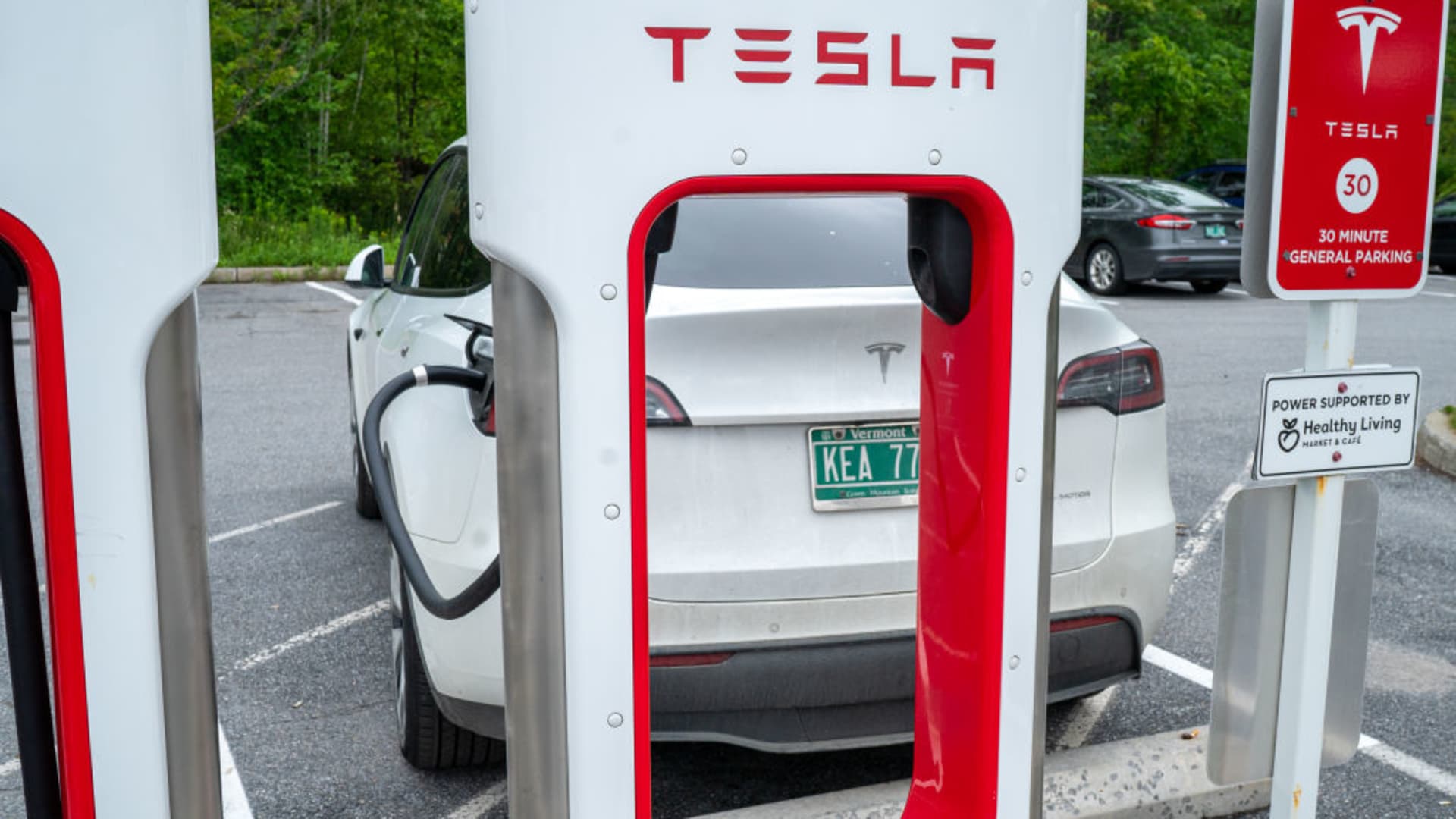
As of Thursday, owners of Ford electric vehicles — the Mustang Mach-E and F-150 Lightning — in North America finally have the ability to power up using Tesla Superchargers.
Ford CEO Jim Farley wrote in a post on LinkedIn that the charging partnership, which involves use of fast-charging adapters, should “improve the EV ownership experience,” for Ford EV drivers, noting that “I’ve tested it myself and its works great.”
Tesla has forged a similar agreement with General Motors, which was announced in June, giving GM customers access to more than 12,000 Tesla fast chargers in the U.S and Canada. GM CEO Mary Barra said at the time that her company expected to save up to $400 million of a planned investment in building out EV charging stations.
The partnerships mark a strategy shift for Tesla CEO Elon Musk, who for years touted the exclusivity of Tesla’s charging network and his company’s ability to build reliable charging locations that would keep consumers from sitting in long lines. Becoming the charging standard has required Tesla to invest heavily in technical and business development.
But Tesla has plenty to gain from working with others.
Sam Fiorani, vice president for global forecasting at AutoForecast Solutions, said these efforts should eventually yield huge financial benefits for Tesla, including from environmental credits and fees for charging sessions.
Currently, Tesla operates about one in three charging stations in the U.S. Even if adoption of battery electric vehicles slows domestically, and the fleet of electric vehicles is smaller than what the government and many automakers planned six months ago, “Tesla could still see $6 billion to $12 billion a year,” by 2030 from its expanded charging business, Fiorani said in an email.
While Tesla could lose some customers to other brands by making charging easier, AutoForecast said there are other reasons car buyers flock to Tesla.
“People shopping for a Tesla aren’t typically cross-shopping at Kia, Ford, or Mercedes-Benz dealers because they simply want a Tesla,” Fiorani wrote. “Competition will continue to heat up and Tesla will inevitably lose some sales to rivals, but loyalty to the brand means the vast majority of owners will return to Tesla with little or no comparison shopping.”
Allowing other automakers to tap its charging network also opens up some federal money for Tesla under President Biden’s Inflation Reduction Act.
“Tesla is not afraid to use government regulations for income and has been working all possible revenue streams for much of its existence,” Fiorani wrote.
Tesla didn’t respond to a request for further information.
Tesla reports charging revenue with its “Total automotive & services and other segment revenue.” The company hasn’t said whether it may break out revenue from non-Tesla vehicle use of its charging network.
William Navarro Jameson, Tesla’s Strategic Charging Programs lead, wrote in a post on LinkedIn on Thursday that getting to this point with Ford has required a lot of “interoperability testing” along with creating all the necessary hardware and software integrations and working through legal issues.
“There have been so many pieces to this puzzle that have been put in place over the past 18 months,” he wrote.
On social media, Tesla touted the opening up of its charging network in North America and circulated a link to entice more retailers to host Superchargers at their facilities.
WATCH: Tesla charging connector is on pace to become the North America EV standard




